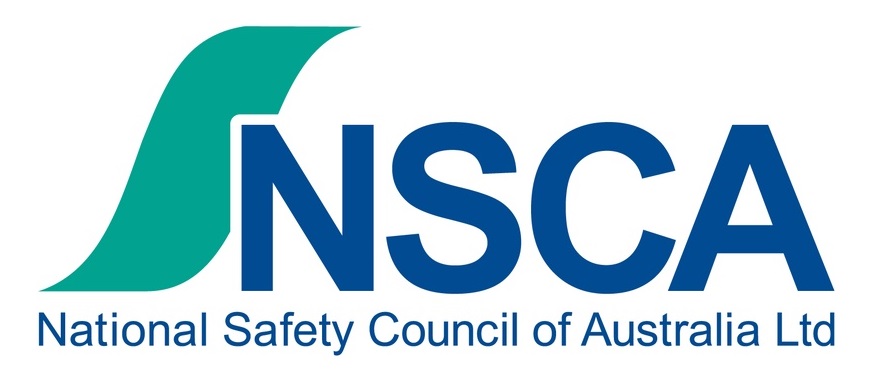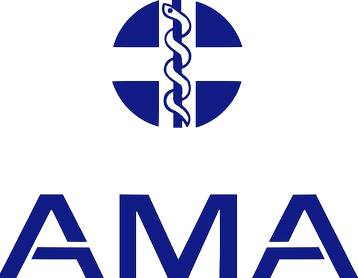Employees Health provide isocyanate health monitoring onsite and at our dedicated clinics. We conduct these health assessments, as per WorkSafe requirements, for workers exposed to isocyanates in the workplace.
Due to the health issues associated with isocyanate exposure, there is legislation governed by Worksafe requiring persons conducting a business or undertaking (PCBU) to initiate a Health Surveillance (monitoring) program for workers exposed to these chemicals in the workplace.
In the automotive industry this is often referred to as spray painter health monitoring. Work Health Professionals work with Motor Trade Australia WA to help their members manage their OHS requirements for spray painters, as well as noise exposure hazards and audiometric testing for panel beaters.






Each isocyanate health assessment includes a:
It can usually be done in 20-30 minutes, and is required every 6-12 months pending health assessment outcomes – more frequently for employees new to the role. Early recognition of employee sensitisation to isocyanates is essential to reduce the risk of long-term or permanent respiratory problems.
We recommend that the Regulatory Guidelines from Safework should be followed when establishing the regularity of health surveillance. There is also their more recent guide to handling isocynates that recommends the following:
If a worker’s results are abnormal or significantly changed from a previous assessment, they may be recommended for a follow up assessment to investigate possible health issues.
Safe Work Australia reviewed the model Code Code of Practice for workers in the Paint manufacturing Industry. For all automotive body repair employers and paint and panel workshops, there is a WorkSafe responsibility to initiate an isocyanate Health Surveillance program to minimise the risk of permanent health damage to their spray painters.
There are serious health effects associated with occupational exposure to isocyanates. Diligent use of personal protective equipment and safe working practices is needed to ensure spray painters and powder coaters minimise the risk of permanent health damage.
The greatest risks are from inhaling vapours, fine droplets (aerosols) and dusts containing Isocyanates, as they irritate the linings of the nose, throat, lungs and eyes. The health effects include:
Isocyanates include compounds also classified as potential human carcinogens (cancer causing compounds) and are known to cause cancer in animals.
The greatest risks are from inhaling vapours, fine droplets (aerosols) and dusts containing Isocyanates, as they irritate the linings of the nose, throat, lungs and eyes. People exposed to Isocyanates at work are at greater risk of developing respiratory problems, such as asthma, if they breathe in isocyanate vapours or droplets of resin spray. There is also a risk of skin conditions if there is regular skin contact with isocyanates.
All isocyanates are hazardous substances and require care when handling. Paints, varnishes and epoxy solvents now often contain a family of highly reactive chemicals known as isocyanates.
People exposed to isocyanates at work are at greater risk of developing respiratory problems, such as asthma, if they breathe in isocyanate vapours or droplets of resin spray.
There is also a risk of skin conditions if there is regular skin contact with isocyanates.
Jobs that often involve exposure to isocyanates include:
Workers in these areas may encounter more health hazards than they realise.
Crucial safety considerations may also go overlooked. Here’s a closer look at the health risks paint fumes pose and how to mitigate them.
The most prominent health risk associated with paint fumes is the presence of carcinogens, chemicals that can cause cancer. For example, some paints contain benzene, a quickly evaporating liquid that causes leukemia. Manufacturing workers spending long hours around paint containing benzene may breathe it in, putting them at risk of cancer.
Apart from carcinogens, many paints contain other volatile organic compounds (VOCs). Toluene, acetone and formaldehyde are commonly used as solvents, sometimes even as the primary liquid. Breathing in these compounds can cause damage to the liver, kidneys and central nervous system, especially over long-term exposure.
Since painting processes in manufacturing are typically contained, indoor operations, the risks of inhaling these toxins are higher. The Environmental Protection Agency (EPA) says VOC concentrations are up to 10 times higher indoors than outdoors. Staying in these areas for extended periods could put workers at significant risk of inhaling these dangerous compounds.
Employees who have allergies to certain chemicals could be at even greater risk. Many common compounds in industrial paints can trigger reactions, which could be dangerous depending on the severity of workers’ allergies. Even people without strong allergies could develop responses to some VOCs with enough exposure.
For example, studies have found that high formaldehyde levels after painting can cause hyper-responsiveness in the lungs, making them more sensitive to airborne contaminants. If employees develop this and keep working, they could start to react to airborne VOCs more dramatically. They could have trouble breathing, even to the point of a medical emergency.
These concerns are even greater with people who have asthma. Chemicals like formaldehyde and acetaldehyde, a common paint binder, can trigger asthma attacks, resulting in severe consequences. Some studies even suggest that exposure to these compounds could lead to the development of asthma or allergies.
Apart from carcinogens, many paints contain other volatile organic compounds (VOCs). Toluene, acetone and formaldehyde are commonly used as solvents, sometimes even as the primary liquid. Breathing in these compounds can cause damage to the liver, kidneys and central nervous system, especially over long-term exposure.
Since painting processes in manufacturing are typically contained, indoor operations, the risks of inhaling these toxins are higher. The Environmental Protection Agency (EPA) says VOC concentrations are up to 10 times higher indoors than outdoors. Staying in these areas for extended periods could put workers at significant risk of inhaling these dangerous compounds.
In addition to these more severe issues, paint fumes can cause several short-term health problems. These may not endanger workers but still cause discomfort and injury. Even if employees can work through these issues, they could hamper their performance and affect their overall health.
The most common short-term side effects of VOC exposure are eye, nose and throat irritation. If these persist, they could lead to trouble breathing. Similar common side effects include headaches, nausea and feeling lightheaded.
Less common but still possible short-term health issues include allergic skin reactions, fatigue, dizziness and vomiting. If workers are around paint fumes over extended periods without proper protection, these side effects may be more likely.
While the health risks associated with paint fumes are concerning, they’re avoidable. Manufacturers can take many steps to ensure their workers don’t suffer any side effects from working with paints. Here are a few of the most important precautions to follow.
By far, the most crucial safety consideration with industrial paints is to ensure proper ventilation. OSHA recommends workplaces use HVAC system filters with a minimum efficiency reporting value of 13 or higher to remove contaminants. Ventilation systems should also pull air in from outside, far from the building’s exhaust, to prevent recirculating any airborne VOCs.
Manufacturers should also require all workers in painting operations to wear protective gear, including face masks and eye protection. N95 respirators and other close-fitting, heavily filtered masks should be the standard. Safety goggles should likewise fit tightly to avoid smaller particles from slipping in. Painters should also wear coveralls and gloves to prevent skin exposure.
Some manufacturers may consider using powder coating instead of traditional paints. Polymer powder is inert and free of toxins, making it safer to work with. Workers using polymer coatings should still follow safety precautions like ensuring ventilation and wearing protective gear.
Alternatively, manufacturers may choose to work with VOC-free paint. Water-based paints contain fewer or no VOCs, making them safer, although they may not perform the same. It’s also important to note that VOC-free paint still emits chemical gases, so other precautions are necessary.
Preventing exposure to isocyanates is the critical step in reducing the health hazard. Engineering controls such as closed systems and ventilation should be the principal method for minimizing exposure. Other controls, such as worker isolation, personal protective clothing and safety equipment are also necessary.
Exposure to hazardous chemicals is a significant risk in spray painting and powder coating activities including during preparation (preparing surfaces, tinting, mixing and pouring paints), storage, clean-up and disposal. The hazardous chemicals that workers may be exposed to include paints, solvents, powders, lacquers, paint strippers, adhesives, surface preparation products, rust converters and rust removers.
Worksafe can review your Health Surveillance program to ensure you are meeting your WorkSafe Isocyanate health surveillance requirements.
Those at greatest risk include those who work with spraying isocyanates and volatile isocyanates such as tolulene diisocyanate (TDI).
Three types of workplaces stand out as having the highest risk of isocyanate exposure in Australia
The Occupational Health and Safety Act 2011, says that you should provide and maintain a work environment in which your employees are not exposed to hazards. This includes training, information, supervision and personal protective clothing and equipment.
When hazardous substances are used in the workplace, there are specific requirements covering things such as:
Employers, main contractors and self employed people must ensure that no person at the workplace is exposed to concentrations of isocyanates above the occupational exposure standard.
Isocyanates are a group of chemicals used in the manufacture of polyurethane plastics, synthetic rubbers, foams, paints, varnishes and adhesives.
The largest volume use of isocyanates is in the production of polyurethane foams. Isocyanate pre-polymers are included in polyurethane paint formulations which, after curing, form durable films.
Isocyanate polymers may also be present in paints including:
Exposure to isocyanates can occur when aerosols or dusts containing isocyanates are released into the atmosphere during spraying. Exposure to isocyanates can also occur during sanding of polyurethane paint that is not fully cured, as this activity can generate dusts containing un-reacted isocyanates. Further, isocyanate-containing materials may release isocyanates into the atmosphere when